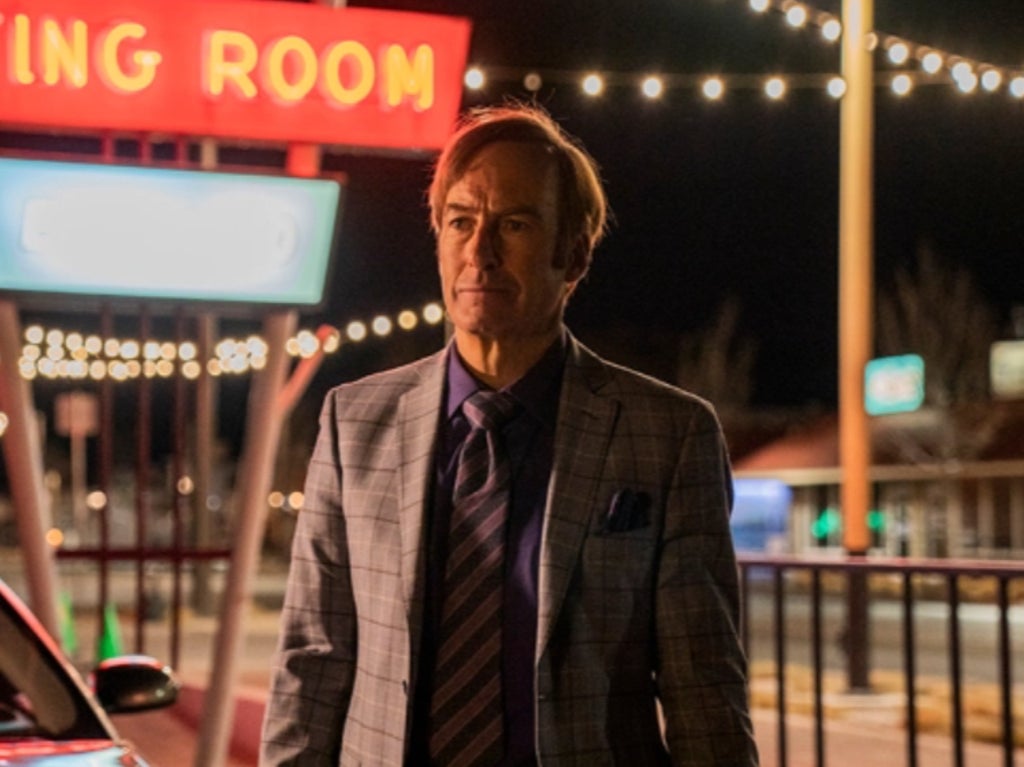
Has there ever been a TV series as masterful as Better Call Saul at staying three steps ahead of its audience? Even more so than its predecessor Breaking Bad, Saul has carved out a niche doing exactly this – slowly teasing its fans with pieces of a puzzle, only to reveal what it is you’re watching hours down the line. The series returns to screens today following a hiatus of two years, with the sixth and final season having been delayed due to the pandemic (as well as shorter disruptions stemming from Bob Odenkirk’s on-set heart attack). You wouldn’t know by watching, however – it picks itself back up without missing a beat.
The season premiere picks up immediately after the end of season four, with Lalo Salamanca (Tony Dalton) wrongly presumed dead after a bloody raid on his Mexican home. Nacho (Michael Mando) has been immediately pegged as the inside man, and goes on the run for his life. Meanwhile, north of the border, Jimmy McGill (Bob Odenkirk), now fully embracing his “Saul Goodman” persona, conspires with his now wife Kim Wexler (Rhea Seehorn) to enact devious vengeance against his former employer Howard Hamlin (Patrick Fabian).
Saul has always been somewhat divided in its storytelling. On the one hand, you have the legal mischief surrounding McGill/Goodman and the eccentricities of the Albuquerque legal scene. On the other, you have the power struggle between factions of the New Mexico drug cartel, which plays more like a traditional crime drama and gives plenty of screen time to returning Breaking Bad favourites Mike (Jonathan Banks), Gus (Giancarlo Esposito) and Hector Salamanca (Mark Margolis). These two worlds often dovetail and intersect one another, but not always: season six begins with two episodes that keep them firmly apart.
With tension mounting in the underworld plotline, the decision to embroil Jimmy and Kim in an elaborate act of character assassination – motivated entirely by petty spite – might seem, on paper, like something of a distraction. But there’s nothing Saul does better than show a scheme at work. We watch as they set up the dominoes, unaware exactly how they’re going to fall. As always, the cleverness in the writing is matched by exemplary talent elsewhere: Saul remains one of the best directed and best acted shows on TV. For my money, the standouts are Seehorn – by turns endearing and flinty; impossible to get a read on – and the wickedly charismatic Dalton, but there’s not a weak link in the bunch.
With just 12 more episodes to go, it’s clear that Better Call Saul is ramping up for its endgame. But if the first two episodes are anything to judge it by, it’s going to go about that the same way it has the rest of its story. Slowly. Methodically. The devil is in the details, but so is everything else. It’s a pleasure to be three steps behind.




!["[T]he First and Fifth Amendments Require ICE to Provide Information About the Whereabouts of a Detained Person"](https://images.inkl.com/s3/publisher/cover/212/reason-cover.png?w=600)


